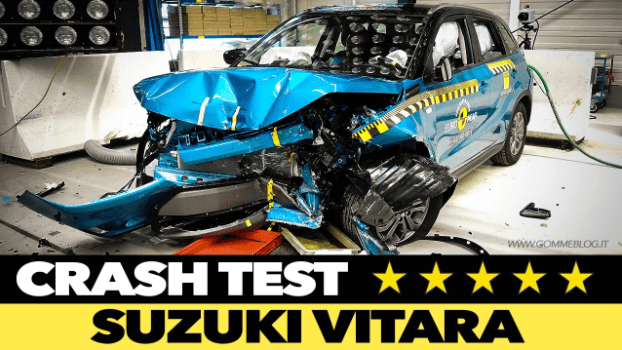
Car safety has improved in leaps and bounds over the past few decades. Take a look at some of the ways that your car keeps you safe in the event of a collision.
When you get behind the wheel of your car, you’re effectively putting your life in the metaphorical hands of a machine. That’s why it’s so important that you choose a car that’s both safe and reliable. Although boring, practical features like airbags aren’t always top of mind when we draw up our wish list of features for a new car, they should be!
Our cars have come a long way in terms of safety
Early car models didn’t come equipped with safety features like airbags and passive safety technology. Take a look at these crash test dummies taking a beating in safety tests during the 1950’s.
Feeling nervous? Don’t panic, car safety has come a long way since our grandparents’ days.
In the past, cars were built to survive a collision. Reinforced metal panels were designed to be as stiff as possible in an effort to avoid your car wrapping around a light pole like tin foil around last night’s leftovers. Little did they know…
Turns out, you actually need your car to crumple up like that. This rigidity might make the panel beater's job a little easier - but it led to drivers and passengers being flung around like confetti, due to the kinetic force generated by the impact. Nowadays, the opposite is true. Thanks to modern technology, like crumple zones, we’re able to sacrifice your vehicle - allowing you to survive the collision instead.
What on earth are crumple zones?
In a nutshell, a crumple zone is a deliberately designed weak point on your vehicle, which is intended to buckle in a specific area upon impact. How does this protect the driver and their passengers? Well, crumple zones are cleverly engineered to absorb a large portion of the kinetic energy that results from a collision. Depending on the shape, size and manufacturer of your vehicle, these crumple zones can vary from simple segmented crumple zones, to using a variety of metals and intricate honeycomb designs (which are stiffer under normal conditions, but collapse easily in a crash).
What other safety features do modern cars have to protect their drivers?
Modern cars have various passive and active safety systems to keep you and your loved ones safe. Some cars are even smart enough to predict accidents, and alert the driver before a collision occurs.
Did you know the Suzuki Vitara was first in its class to be awarded a five star safety rating from European New Car Assessment Programme (NCAP)? The NCAP five star rating is reserved for cars which provide the greatest collision protection for both passengers and pedestrians. The NCAP tests put vehicles through rigorous testing, so every star is extremely valuable!
When you’re weighing up the safety features in a vehicle, some of the top features to look out for are:
- Airbags - at least one for both the driver and a passenger.
- Anti-lock braking system (ABS) - which prevents your wheels from locking, and gives you the ability to steer during hard braking.
- Electronic brake force distribution (EBD) - which automatically varies pressure applied to each wheel, depending on the road conditions, to allow maximum stopping power and control.
- Adaptive headlights shine their beams in the direction of a curve, giving you better vision at night and in poor visibility, around bends in the road.
- Central locking.
- SIPS or Side Impact Protection System is the name of a system to protect against injury in a side collision.
- Seat belts with pretensioners, To make sure a seatbelt restrains an occupant as early as possible in a crash.
- As well as load limiters, to help protect occupants from seatbelt-inflicted injury.
Your infotainment system won’t save your life - but those airbags sure could. Your life is precious, don’t forfeit safety in favour of the nice-to-haves.
Is your child learning to drive? Or maybe they’ve just passed their driver’s test. Chances are they’re begging you for their own set of wheels. Download the ebook, Guide to buying your child their first car, to help you navigate the inevitable debate over reliability and the ever coveted “cool” factors.
This guide will help you troubleshoot some common car problems, so that you know whether or not you need to contact a mechanic. It also covers a variety of driver safety tips to keep you and your loved ones safe on the road.

![Are you driving a death trap? [quiz]](https://blog.suzukiauto.co.za/hubfs/Blog_post_images/Are%20you%20driving%20a%20death%20trap/DSC02776%20(3)-842556-edited.jpg)

